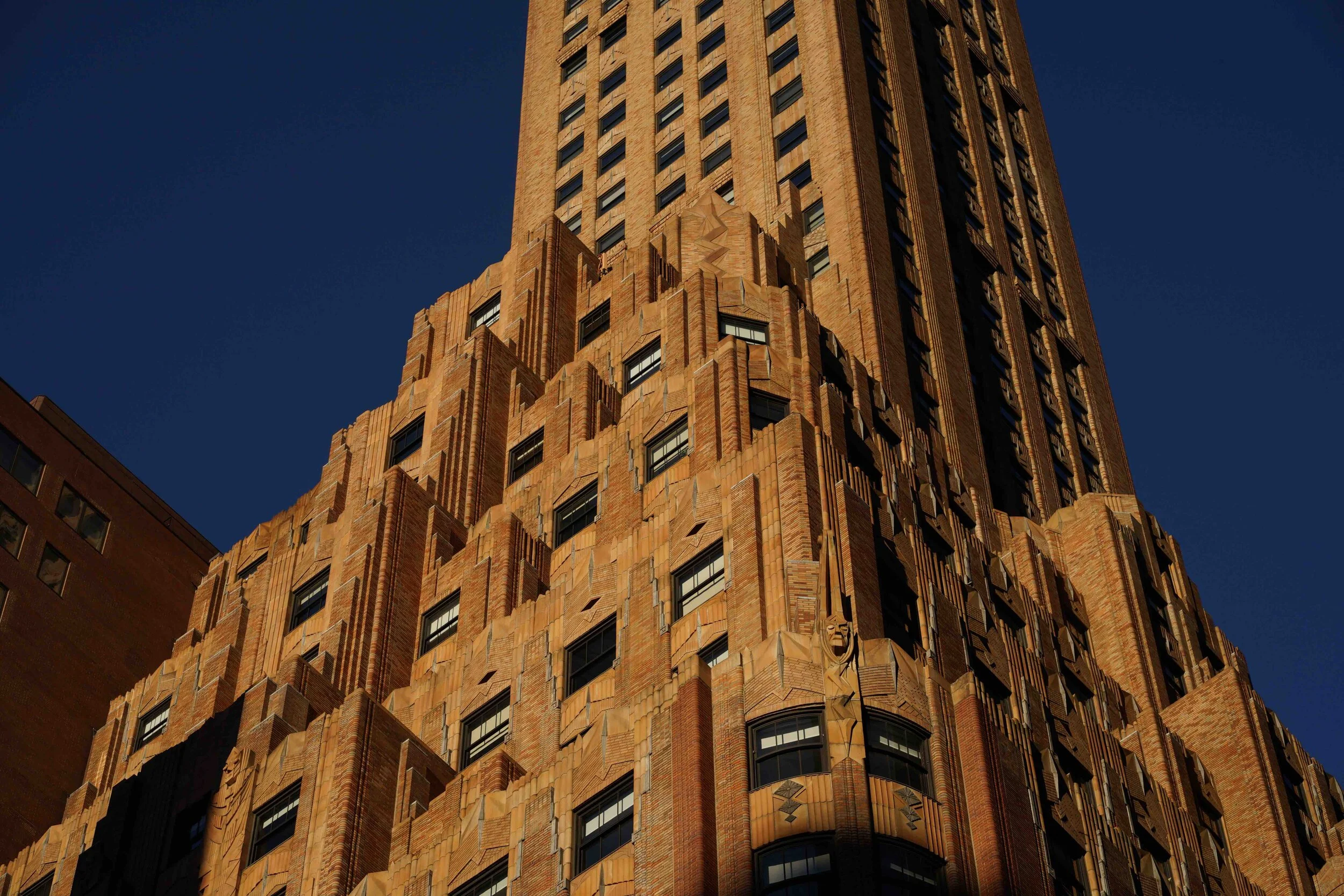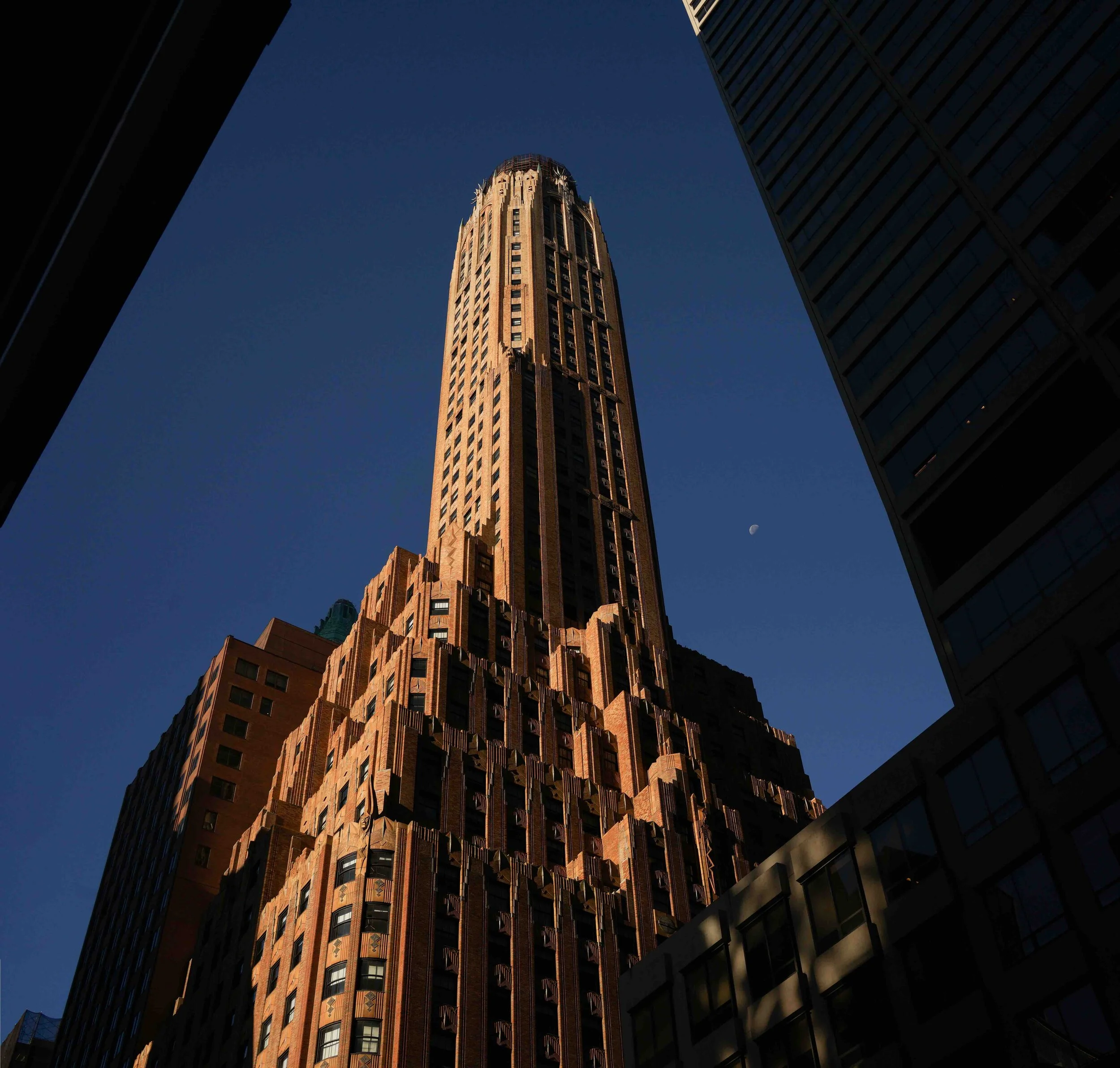570 Lexington – Electric Top
Photos and text by Guglielmo Mattioli for NYC Urbanism. Cover image: Michael Young
It is one of the most embellished midtown skyscrapers. The crowning crest of the 1930s General Electric Building (originally the RCA Victor Building) is a triumph of metal lightning bolts, art deco ornamentation and terracotta work that masterfully concludes what is already one of the most eclectic and electric skyscrapers in the Manhattan skyline.
The building was designed in 1931 by two brothers, Cross & Cross, who also designed FiDi’s 20 Exchange Place, another art-deco gem that opened the same year. Along with Raymond Hood (link) and JER Carpenter (link), the two brothers attended the school of Beaux-Art in Paris, absorbed the Art Decoratif lesson and masterfully deployed it throughout the tower, mixing it with gothic revival elements. The result is a neo-gothic tower in its vertical development featuring buttresses and piers, and art-deco ornamentation.
From the ground up, the tower is scattered with symbolism, recalling radio waves, energy, and electricity. Cross & Cross used the ornamentation apparatus to reflect their client’s mission, using architecture as a vessel for prestige and corporate visibility.
The original commissioner was the Radio Victor Corporation of America (RCA), a subsidiary of General Electric, that sold radio devices and electronics and pioneered radio and television transmissions. It was RCA that created NBC, the National Broadcasting Company. When RCA decided to separate from General Electric, part of the agreement was to cede the new tower then under construction, to GE. The metal, round clock on Lexington and 51st reflects the new ownership and displays the GE logo, surmounted by two metal hands holding a lightning bolt or what could be a symbolic representation of electricity generated by the two hands.
One element that sets Cross & Cross’s design aside is the use of mysterious anthropomorphic figures, reminiscent of what one could find on a byzantine style building, like the church next door. At 570 Lexington, they incorporated dozens of herm figures on the building’s facade; guardians some holding lightning bolts, or spreading their wings to mark a corner or a setback.
But it’s at the very top that the duo fully released their imagination. Four gigantic electric deities on each side of the building, look down on the city below—their faces framed by lightning bolts forged in metal. Connecting the four is an elaborate circular crown, a masterpiece of tracery that looks like a piece of cloth lace made of terracotta. Spikes and pinnacles add to the drama. At night, backlights project the supernatural crown into the sky.
Despite being one of the least visible parts of a tall building, architects, especially in the 1930s, focused their attention on it. The level of details and design stratagem deployed for sections that most will ever see is quite revealing of how designers saw their buildings, not just mere envelopes hosting various functions, but wholesome artistic creations in which every part has its own dignity and expression. The top of a building, therefore, becomes the most crucial component, deserving of the highest attention; ultimately it’s where the work of an architect meets the sky.
This continuing series by Guglielmo Mattioli explores the unique tops of 1930s skyscrapers in Midtown
Guglielmo Mattioli Is a multimedia journalist with a background in architecture and urban planning. Using different mediums, from writing to video and Virtual Reality, he tells stories mostly focusing on the built environment. Guglielmo's work appeared on The New York Times, National Geographic, The Guardian, Architect’s Newspaper, Metropolis Magazine, City Limits and RAI.








